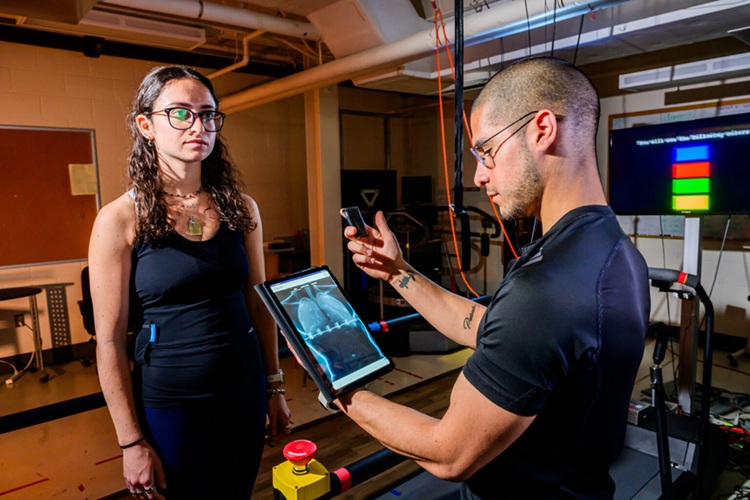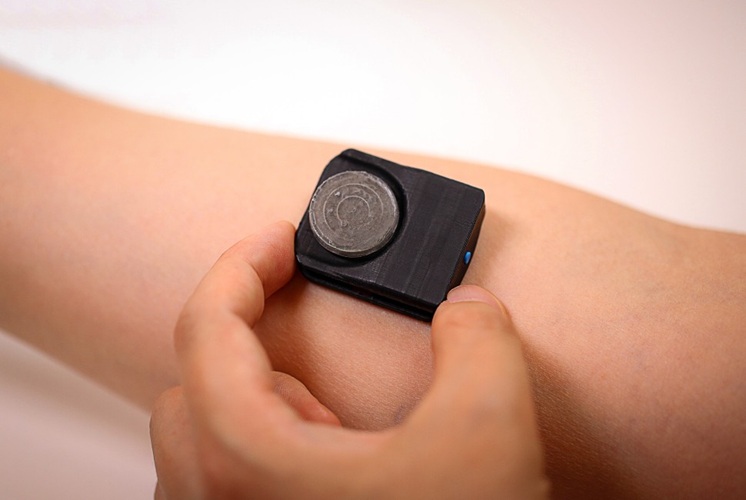CT Values Should Not Be Used to Assess Performance of SARS-CoV-2 PCR Tests or Triage COVID-19 Patients, Finds Study
|
By HospiMedica International staff writers Posted on 13 Oct 2021 |

A novel study has shown that coronavirus test cycle threshold (Ct) values should not be used to assess the performance of coronavirus tests or to triage COVID-19 patients.
These findings of the study by an international group of scientists, led by the National Measurement Laboratory for Chemical and Bio-Measurement team at LGC (Middlesex, UK), could improve the development of coronavirus tests, which are crucial for managing the pandemic, as well as care for COVID-19 patients.
When a patient gets a standard coronavirus test - known as a PCR test - Ct values are generated as part of the testing process. These values are also commonly known as Cq or Cp values. In WHO’s recommendations for coronavirus test developers and funders, the organization proposes a Ct of 25 as the minimum level of virus that should be detected by point-of-care coronavirus tests (i.e., tests that can be performed near the patient). Some research has also suggested that Ct values could potentially identify patients who have high viral loads and are at increased risk for serious disease. However, in July of this year, the American Association for Clinical Chemistry (AACC) had issued a public statement advising against the use of these values to guide COVID-19 public health efforts or treatment due to a lack of conclusive data supporting this.
In an effort to fill this data gap, the international team of researchers set out to determine how the WHO’s suggested Ct cut-off of 25 impacts coronavirus test performance. To do this, the researchers analyzed the results of more than 6,000 patients who underwent coronavirus PCR testing at three clinical laboratories in the UK, Belgium, and the Republic of Korea. For the purposes of this study, all PCR tests used were considered to have 100% clinical sensitivity (i.e., the ability to correctly identify patients with COVID-19 100% of the time). However, when the team interpreted the tests’ results using the WHO’s cut-off, the tests’ clinical sensitivity dropped, varying from approximately 16% to 90% depending on the patient cohort.
Further analysis of data from 732 additional laboratories found that an individual Ct value can correspond to widely differing viral loads depending on the lab. For example, in theory, the Ct value range of 25-30 corresponds to 106 copies of SARS-CoV-2/mL. In reality, however, the researchers found that that Ct range can correspond to as many as 108 copies/mL to as few as 103 copies/mL. When taken altogether, these results showed that Ct values should not be used to guide test development or to determine a patient’s prognosis.
“While [Ct] values may be useful in COVID-19 for epidemiological assessments of populations, they should be avoided as a quantitative measure for individual patient stratification or … analytical performance targets,” said Jim Huggett, PhD, of the U.K. National Measurement Laboratory at LGC, who led the research team. “If quantification is to be performed, copy based units calibrated to appropriate standards should be explored as applied in other areas of clinical virology. When dealing with a new pathogen, this fact is hampered by an initial absence of appropriate standards to calibrate the copy based units; consequently; their rapid production should be an important part of diagnostic response plan to a new epidemic.”
Related Links:
LGC
Latest COVID-19 News
- Low-Cost System Detects SARS-CoV-2 Virus in Hospital Air Using High-Tech Bubbles
- World's First Inhalable COVID-19 Vaccine Approved in China
- COVID-19 Vaccine Patch Fights SARS-CoV-2 Variants Better than Needles
- Blood Viscosity Testing Can Predict Risk of Death in Hospitalized COVID-19 Patients
- ‘Covid Computer’ Uses AI to Detect COVID-19 from Chest CT Scans
- MRI Lung-Imaging Technique Shows Cause of Long-COVID Symptoms
- Chest CT Scans of COVID-19 Patients Could Help Distinguish Between SARS-CoV-2 Variants
- Specialized MRI Detects Lung Abnormalities in Non-Hospitalized Long COVID Patients
- AI Algorithm Identifies Hospitalized Patients at Highest Risk of Dying From COVID-19
- Sweat Sensor Detects Key Biomarkers That Provide Early Warning of COVID-19 and Flu
- Study Assesses Impact of COVID-19 on Ventilation/Perfusion Scintigraphy
- CT Imaging Study Finds Vaccination Reduces Risk of COVID-19 Associated Pulmonary Embolism
- Third Day in Hospital a ‘Tipping Point’ in Severity of COVID-19 Pneumonia
- Longer Interval Between COVID-19 Vaccines Generates Up to Nine Times as Many Antibodies
- AI Model for Monitoring COVID-19 Predicts Mortality Within First 30 Days of Admission
- AI Predicts COVID Prognosis at Near-Expert Level Based Off CT Scans
Channels
Critical Care
view channel
Novel Intrabronchial Method Delivers Cell Therapies in Critically Ill Patients on External Lung Support
Until now, administering cell therapies to patients on extracorporeal membrane oxygenation (ECMO)—a life-support system typically used for severe lung failure—has been nearly impossible.... Read more
Generative AI Technology Detects Heart Disease Earlier Than Conventional Methods
Detecting heart dysfunction early using cost-effective and widely accessible tools like electrocardiograms (ECGs) and efficiently directing the right patients for more expensive imaging tests remains a... Read more
Wearable Technology Predicts Cardiovascular Risk by Continuously Monitoring Heart Rate Recovery
The heart's response to physical activity is a vital early indicator of changes in health, particularly in cardiovascular function and mortality. Extensive research has demonstrated a connection between... Read more
Wearable Health Monitoring Device Measures Gases Emitted from and Absorbed by Skin
The skin plays a vital role in protecting our body from external elements. A key component of this protective function is the skin barrier, which consists of tightly woven proteins and fats that help retain... Read moreSurgical Techniques
view channel
Intravascular Imaging for Guiding Stent Implantation Ensures Safer Stenting Procedures
Patients diagnosed with coronary artery disease, which is caused by plaque accumulation within the arteries leading to chest pain, shortness of breath, and potential heart attacks, frequently undergo percutaneous... Read more
World's First AI Surgical Guidance Platform Allows Surgeons to Measure Success in Real-Time
Surgeons have always faced challenges in measuring their progress toward surgical goals during procedures. Traditionally, obtaining measurements required stepping out of the sterile environment to perform... Read morePatient Care
view channel
Portable Biosensor Platform to Reduce Hospital-Acquired Infections
Approximately 4 million patients in the European Union acquire healthcare-associated infections (HAIs) or nosocomial infections each year, with around 37,000 deaths directly resulting from these infections,... Read moreFirst-Of-Its-Kind Portable Germicidal Light Technology Disinfects High-Touch Clinical Surfaces in Seconds
Reducing healthcare-acquired infections (HAIs) remains a pressing issue within global healthcare systems. In the United States alone, 1.7 million patients contract HAIs annually, leading to approximately... Read more
Surgical Capacity Optimization Solution Helps Hospitals Boost OR Utilization
An innovative solution has the capability to transform surgical capacity utilization by targeting the root cause of surgical block time inefficiencies. Fujitsu Limited’s (Tokyo, Japan) Surgical Capacity... Read more
Game-Changing Innovation in Surgical Instrument Sterilization Significantly Improves OR Throughput
A groundbreaking innovation enables hospitals to significantly improve instrument processing time and throughput in operating rooms (ORs) and sterile processing departments. Turbett Surgical, Inc.... Read moreHealth IT
view channel
Printable Molecule-Selective Nanoparticles Enable Mass Production of Wearable Biosensors
The future of medicine is likely to focus on the personalization of healthcare—understanding exactly what an individual requires and delivering the appropriate combination of nutrients, metabolites, and... Read more
Smartwatches Could Detect Congestive Heart Failure
Diagnosing congestive heart failure (CHF) typically requires expensive and time-consuming imaging techniques like echocardiography, also known as cardiac ultrasound. Previously, detecting CHF by analyzing... Read moreBusiness
view channel
Expanded Collaboration to Transform OR Technology Through AI and Automation
The expansion of an existing collaboration between three leading companies aims to develop artificial intelligence (AI)-driven solutions for smart operating rooms with sophisticated monitoring and automation.... Read more


















